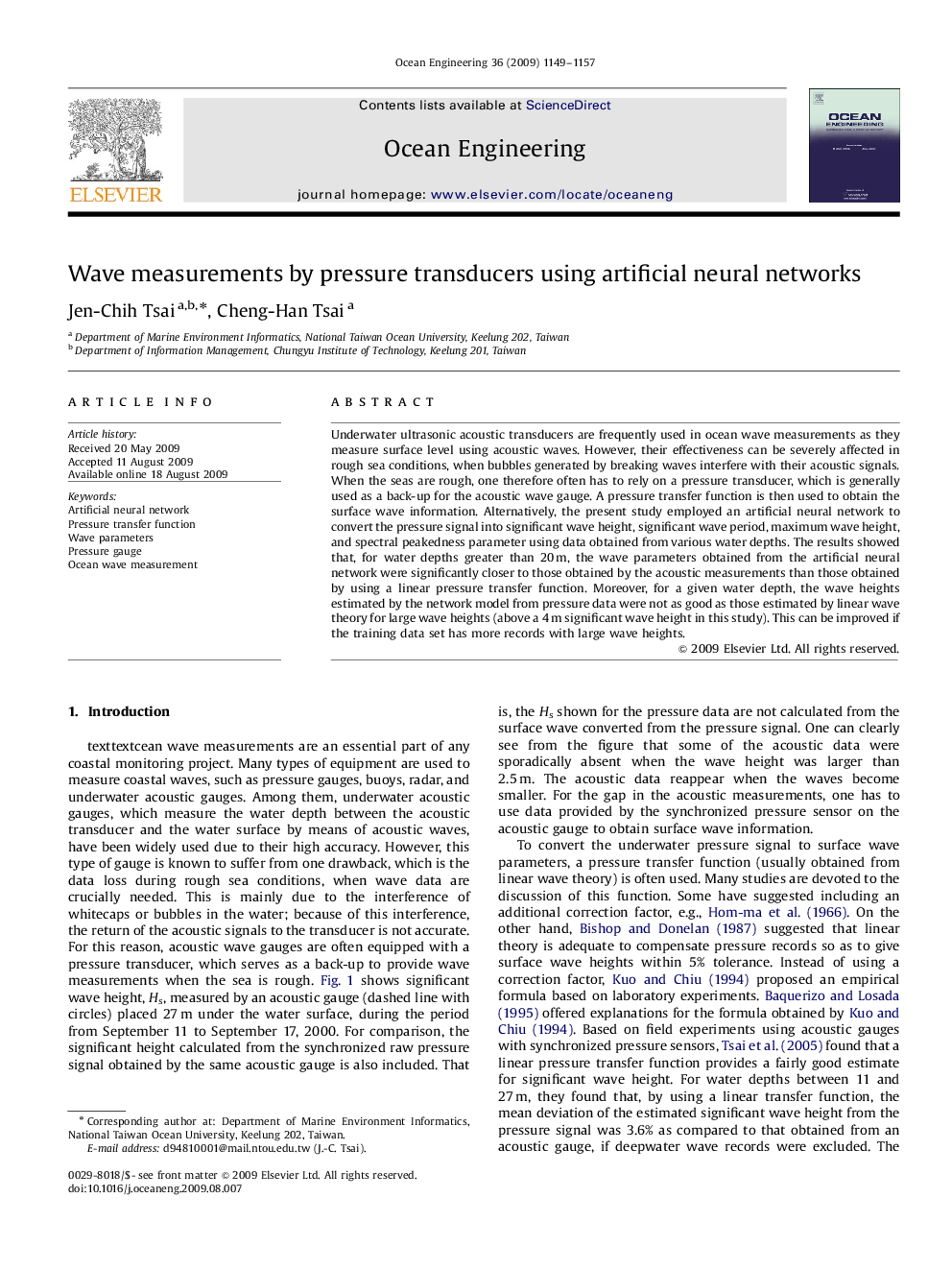| Article ID | Journal | Published Year | Pages | File Type |
|---|---|---|---|---|
| 1726554 | Ocean Engineering | 2009 | 9 Pages |
Underwater ultrasonic acoustic transducers are frequently used in ocean wave measurements as they measure surface level using acoustic waves. However, their effectiveness can be severely affected in rough sea conditions, when bubbles generated by breaking waves interfere with their acoustic signals. When the seas are rough, one therefore often has to rely on a pressure transducer, which is generally used as a back-up for the acoustic wave gauge. A pressure transfer function is then used to obtain the surface wave information. Alternatively, the present study employed an artificial neural network to convert the pressure signal into significant wave height, significant wave period, maximum wave height, and spectral peakedness parameter using data obtained from various water depths. The results showed that, for water depths greater than 20 m, the wave parameters obtained from the artificial neural network were significantly closer to those obtained by the acoustic measurements than those obtained by using a linear pressure transfer function. Moreover, for a given water depth, the wave heights estimated by the network model from pressure data were not as good as those estimated by linear wave theory for large wave heights (above a 4 m significant wave height in this study). This can be improved if the training data set has more records with large wave heights.
